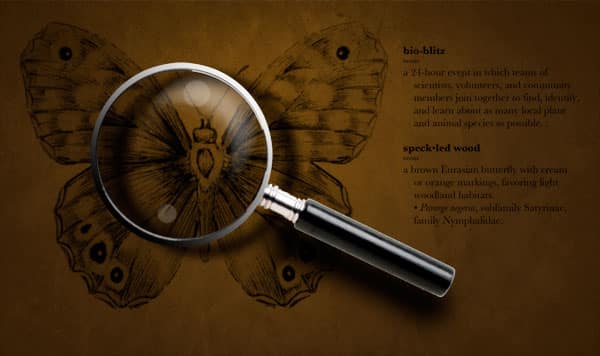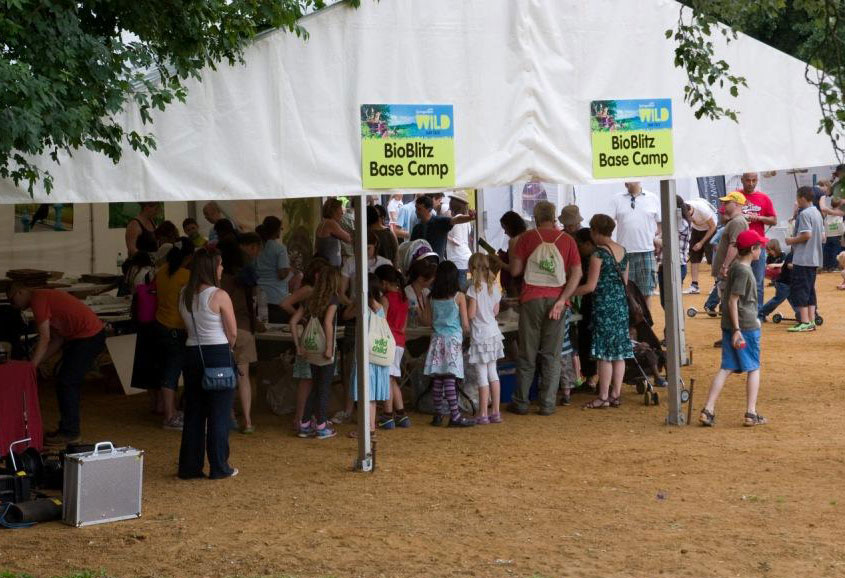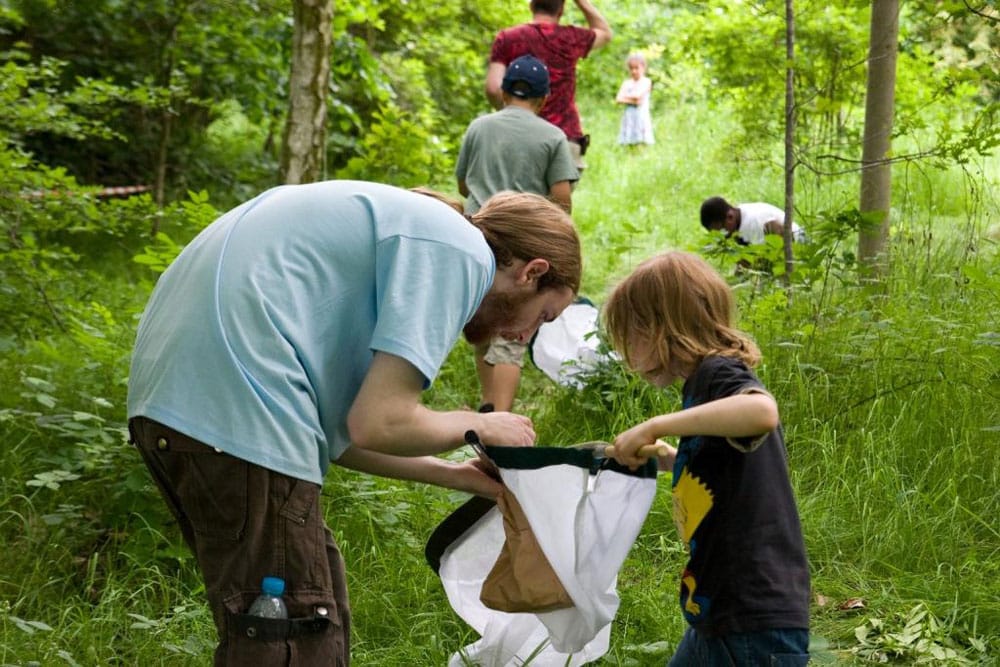John Tweddle, Natural History Museum

A BioBlitz is a light-hearted biological survey that provides the chance for naturalists and members of the public to explore and learn together. As well as raising awareness of biodiversity and the importance of biological recording, it can also generate genuinely useful biodiversity information.
A collaborative race to discover as many types of wildlife as possible within a set location, over a defined time period, BioBlitzes are obviously no replacement for structured surveys and long-term monitoring programmes, but have great potential for engaging new naturalists.
The Ally Pally BioBlitz, ran from 5pm on Friday 4th to 5pm on Friday 5th June and formed part of the wider Springwatch Nature Festival coordinated by BBC Breathing Places.
Friday evening was pretty relaxed, with a team of LNHS and Natural History Museum naturalists surveying various groups of insects and setting a moth trap to check the next morning. Saturday was the main public event, with participants encouraged to search for and identify the different plants, fungi and animals that they could find within three ‘Discovery Zones’ set across Alexandra Palace park. Anything new was popped in a tube or photographed for identification back at basecamp. Biodiversity-themed goodie-bags were on offer for children and adults who completed three or more activities.

GiGL were located within BioBlitz Basecamp where they took paper records from naturalists and input them into spreadsheet format, and provided regular updates on the numbers of observations and taxonomic groups found. This also gave a chance for Claudia, Maria and Matt to chat to members of the public about the importance of GiGL’s work.
An amazing 8,000 members of the public descended on the festival, with an incredible 4,000 plus taking part in various hands-on wildlife identification and recording activities on offer. This staggering success was made possible by the enthusiasm and knowledge of the many naturalists and volunteers that gave up their time to help, and an indication of just how much interest there is in London’s wildlife.
In total, BioBlitz participants recorded 700 taxa (or 699 if Matt decides that cats don’t count) and 900 verified records. Once processed, these records will be available on the public surveys section of the GiGL website .
These were mostly the expected urban park species, although there were one or two surprises including male and female stag beetles. To our knowledge, this is first time that this charismatic beetle has been recorded within the park boundaries. Stag beetles are a national and London BAP species, and although quite common south of the Thames, are less frequent in north London.

A rare Bolbitius fungus was also found – possibly the fourth UK record of Bolbitius titubans var. olivaceus. The area of acid grassland within the park, one of regional importance, is an area which the BioBlitz revealed to contain an apparently healthy population of the grass Danthonia decumbens and the very rarely recorded red data book beetle, Amphotis marginata.
All in all, the BioBlitz was a great success, recording a great number of species and engaging large numbers of people. The BioBlitz dataset is being combined with existing survey data by Haringey Council to support a bid for the Park to be designated a Local Nature Reserve.
Finger’s crossed and here’s to next year. Any ideas for a venue? Get in touch and let us know.
For more information please contact Dr John Tweddle, OPAL Project Manager, j.tweddle@nhm.ac.uk
The Ally Pally BioBlitz was organised by the Natural History Museum and OPAL in partnership with BBC Breathing Places, Alexandra Palace Charitable Trust, Haringey Council, GiGL and the London Wildlife Trust.
Visit www.OPALexplorenature.org/ to find out more.
